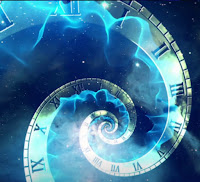Methods of Time Travel in Fiction
I confess, I read only books that I find in thrift stores. There are two reasons for this, one of which I might admit to another day! and one of which I will say now: it feels a little bit like a treasure hunt. My recent find was two novels by Jack Finney, the first of which is Time and Again. It is the story of Si Morley, advertising artist in the early 70’s (late 60’s?), who is offered the chance of a lifetime to join a secret project of the United States government, without knowing what the project is. He signs on and I think it won’t be a spoiler, since it’s right there on the dust jacket (not to mention the title of my article), to say the project involves time travel.
I am currently about half-way through, and finding it an absolutely fascinating story, with very realistic reactions to meeting people of another era, and vivid descriptions. I would say Jack Finney’s strongest point of his many strong points, is his attention for detail, which really brings each scene alive.
What interested me, however, is comparing the methods of time travel in the many stories available that feature it. H.G. Wells’ Time Machine is probably the best known. Like H.G. Wells, Michael Crichton uses technology to transport his characters in his book Timeline.
A second method that seems to come up routinely is witchcraft or magic. A sorcerer is the– forgive the pun– source of the switch in time in the movie Just Visiting. An evil witch does the same thing to her unsuspecting victim in a lesser known book, a romance, called The Gray Ghost. My favorite childhood novel, In the Keep of Time, by Margaret J. Anderson, fits in the magic category: an ancient ruin of a Scottish keep, whose key at times glows mysteriously– and that is when the switches happen. I think Diana Gabaldon’s beloved and popular Outlander series would also fall into this category, as the characters travel through standing stones.
Somewhere in Time, the Christopher Reeve movie set on Michigan’s Mackinac Island, relies on the concept that a man can surround himself with the elements of the past and believe himself right back into a different era. This is the idea Jack Finney uses, although with the twist of an elaborate secret government project, based on Einstein’s theories, in which Si Morley and others like him are trained in self-hypnosis, given extensive training in the era to which they will travel, and left at sites which either are virtually as they were, or can be made, briefly, to be much as they were, in the time era to which the researchers intend to travel.
The recent and very popular Time Traveler’s Wife by Audrey Niffenegger, has presented the most unique explanation to date: a genetic anomaly.
My own novel, Blue Bells of Scotland, ends with no real explanation as to how the switch might have occurred. In Book 2, they explore that question, and so far, I have not seen a book that uses the same explanation they find.
I continue to look for books on time travel, and am interested to find out what other methods have been conjured by authors. Feel free to comment on time travel novels you’ve read or look into lots of great Time Travel Fiction at Amazon! Have fun!
The Battle is O'er is now available!
Start from the beginning: Prelude One
~ ~ ~
If you like an author's blog posts, please like and share.
It helps us continue to do what we do.
For other posts on other authors:
PTL Perrin's Terra's Anthem
Meeting Margaret: the Conclusion
Ross Tarry Mysteries
PTL Perrin's Terra's Anthem
Meeting Margaret: the Conclusion
Ross Tarry Mysteries
For more on my books, click the images:












Comments
Post a Comment